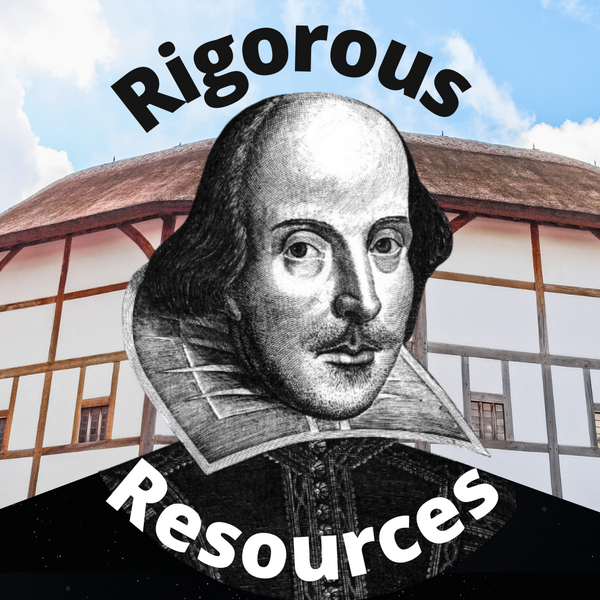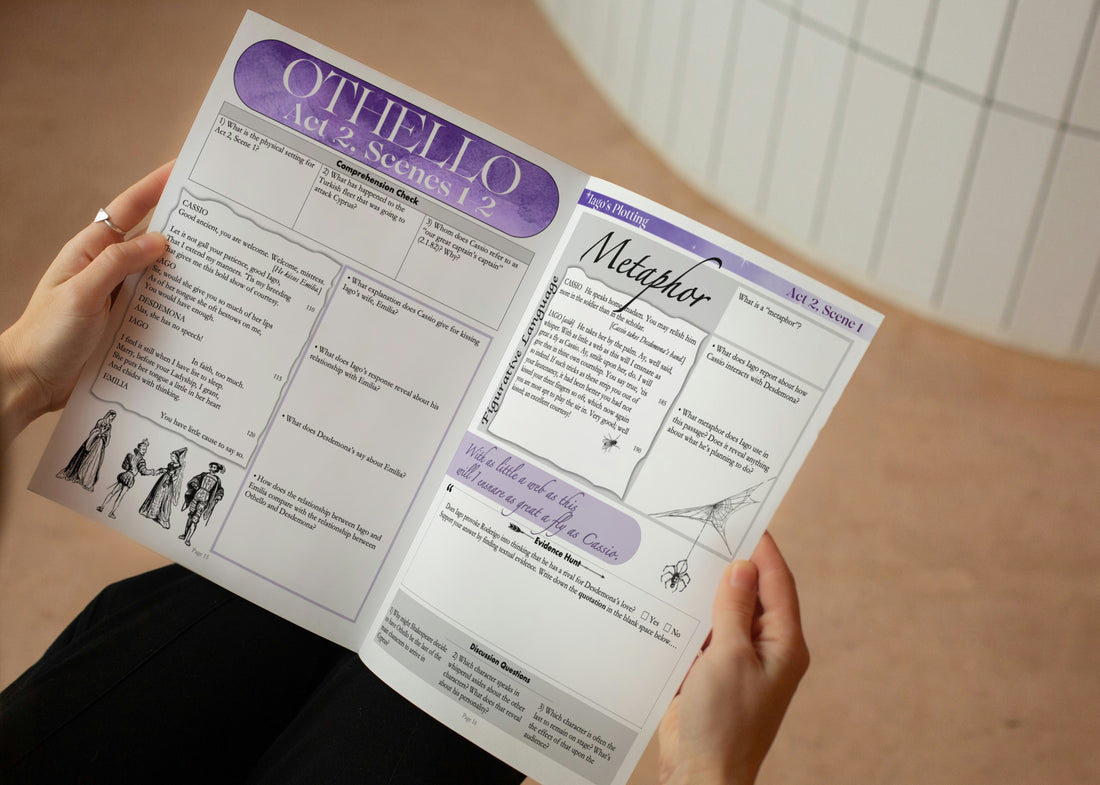Although it was written over 400 years ago, William Shakespeare's Othello can help students achieve a deeper understand of how race and gender operate in today’s world. The play provides teachers with an opportunity to discuss modern-day concepts like “intersectionality,” “stereotype threat,” and “code switching.”
For example, Shakespeare's construction of characters like Othello, Iago, Desdemona, and Emilia is informed by an intersectional approach to identity categories like race, class, and gender. This is what makes the play so fascinating!
I. Dismantling Racism

The full title of the play is The Tragedy of Othello: The Moor of Venice. In Shakespeare’s day, the word “Moor” referred to a person who came from Mauretania, a kingdom in North Africa located in present-day Morocco and Algeria. While Shakespeare would construct other characters who came from this same geographical region — ranging from Aaron in Titus Andronicus (1593) to Cleopatra in Antony and Cleopatra (1607) — his most famous character from Africa is Othello.
But if the play's subtitle describes Othello as a “Moor,” it also indicates that he is “of Venice.” So Shakespeare gives his protagonist a dual identity: Othello is both a Moor and a Venetian, both an African and a European. Moreover, while he was born and raised elsewhere, Othello has come to hold a prominent position within the European city of Venice. For he is now the highest-ranking officer in the Venetian military: namely, the general.
Unsurprisingly, Othello is admired and respected by the political leaders in Venice. He is greeted by the Duke of Venice as “Valiant Othello” (1.3.56). And when he leads a fleet of ships to defend the Venetian colony of Cyprus from an attack by foreign invaders, he is described by a government official as “brave Othello” (2.1.42).
Yet not every character talks about Othello in a consistently respectful manner. So while reading this play, you may want to attend to how different characters speak to and about Othello. Which characters refer to him by his proper name, “Othello”? Which characters refer to him merely as “the Moor”? Why might that be important?

II. Iago: A Jealous & Cunning Villain
The first scene of Othello focuses not on the title character but rather on his ancient, Iago. An “ancient” is a low-ranking military officer who is responsible for flying the flag of the regimen.
Speaking to his friend Roderigo, Iago reports that he recently applied for a promotion to the position of Othello’s lieutenant (or second-in-command). But the promotion was given to a fellow soldier named Michael Cassio.
Iago complains that Cassio is unfit for the position of lieutenant since he has “never set a squadron in the field” (1.1.23). Moreover, Iago condescends to his rival as being a smooth talker rather than a man of action: “Mere prattle without practice” (1.1.27).
Prone to comparing himself with others, Iago feels perpetually slighted and deprived of positions which he deserves. “I know my price,” he asserts, “I am worth no worse a place” (1.1.12). His character is beset by feelings of wounded pride, jealousy, and resentment.
Iago’s jealousy seems heightened by his awareness that Cassio was not born in Venice but comes from the courtly city of Florence. Just as Iago constantly refers to Othello as “the Moor,” he deliberately refers to Cassio as “a Florentine” (1.1.21). In this way, the native-born Venetian attempts to "other" his rivals by drawing attention to their outsider status. To what extent might Iago's need to feel superior be what motivates his racism, sexism, and xenophobia?
Beginning in Act 2, Iago will attempt to get rid of his feelings of jealousy by projecting them onto Othello. He does this by making Othello suspect that Desdemona is having an affair with Cassio. Put another way, Iago tries to establish that it's not himself but rather Othello whose "place" has been usurped by Cassio.
III. Interrogating Whiteness
Shakespeare uses the first scene to put the problem of racism at the center of the play. Feeling resentful that Othello has promoted Cassio to be his lieutenant, Iago begins to circulate racist stereotypes about black people. He does this before the title character has even set foot on stage.
In the second and third scenes, when Othello does finally appear on stage, his eloquent speech and dignified behavior immediately dispel such racist stereotypes — and contrast strongly with Iago’s vulgar speech. Why might Shakespeare choose to structure the opening scenes in this manner? What do they reveal about the conditions which people of color are often faced with navigating?
It is no accident that these early scenes turn a spotlight on the white villain, Iago. For in addition to dismantling stereotypes, Shakespeare’s play interrogates why certain people are invested in perpetuating stereotypes in the first place. Although whiteness is often an unmarked racial category, Shakespeare renders whiteness visible on the stage and challenges audiences to reflect upon both the benefits and blindspots that come with being a member of a majority.
Iago is a native-born white Venetian who, over the course of five acts, will attempt to make all of the other characters in the play turn against one another. In a play where the characters spend a lot of time worrying about the danger presented by outsiders — whether in the form of a Turkish fleet or the arrival of immigrants — it will turn out that the ultimate "insider" has been trying to foment a civil war. Yet until the play’s final scene, his character remains the beneficiary of everyone else’s trust: he’s credited with being “honest Iago.”
IV. Speaking Up for Truth & Justice
Fortunately, there are other white characters in the play who speak up courageously in defense of the black protagonist. One such character is Othello’s wife, Desdemona — but she’s not the only one! There are also male characters in the play who refuse to join Iago in speaking derisively about women. Why is that important?
In sum, while this is a play about jealousy and revenge, it is also a play about love, friendship, and solidarity. Which characters raise their voices in support of others? What is this play’s message about the importance of speaking up?

Teach It Today!
Save yourself dozens of hours of prep time while motivating students to be highly engaged. Check out this Complete Teaching Unit on Othello. You'll use it for years to come!



2 comments
Rigorous Resources has the BEST lesson plans on Shakespeare’s plays. The answer keys are filled with an unprecedented amount of textual insight. Highly recommended!
This teaching resource has been a game-changer for student engagement. Thank you for creating such high-quality lesson plans on Shakespeare!